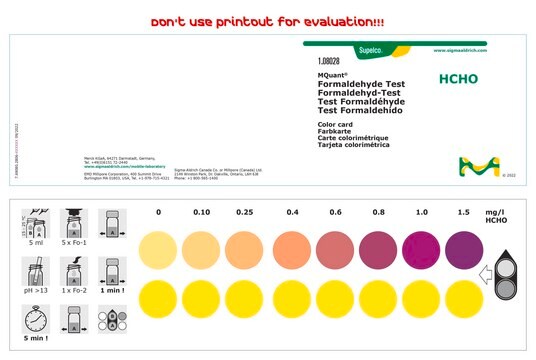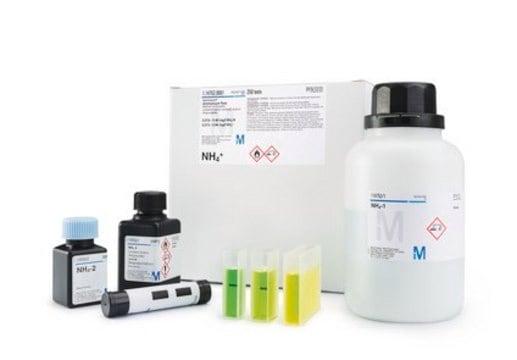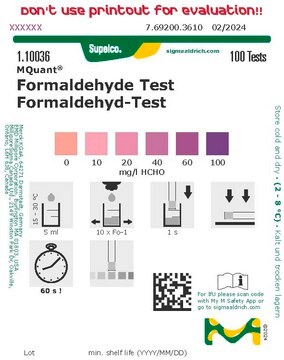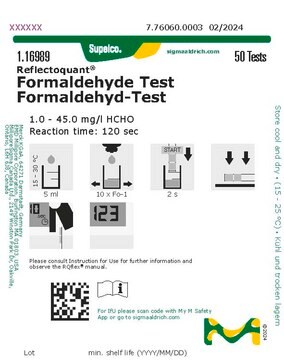Key Documents
MAK131
Formaldehyde Assay
sufficient for 100 fluorometric tests
About This Item
Polecane produkty
zastosowanie
sufficient for 100 fluorometric tests
metoda wykrywania
fluorometric
powiązane choroby
cancer
temp. przechowywania
2-8°C
Powiązane kategorie
Opis ogólny
Zastosowanie
- Modified Natural Rubber as a Simple Chemical Sensor with Smartphone Detection for Formaldehyde Content in a Seafood Sample.: This article explores the use of modified natural rubber as a chemical sensor, paired with smartphone detection, to measure formaldehyde content in seafood. This approach highlights the potential for accessible and mobile detection systems in food safety applications (Yeerum et al., 2022).
- Optical enzymatic formaldehyde biosensor based on alcohol oxidase and pH-sensitive methacrylic-acrylic optode membrane.: The study develops an optical enzymatic biosensor for formaldehyde, using alcohol oxidase with a pH-sensitive membrane, offering a novel approach for quick and sensitive detection in various analytical applications (Nurlely et al., 2022).
Cechy i korzyści
Przydatność
Zasada
Hasło ostrzegawcze
Danger
Zwroty wskazujące rodzaj zagrożenia
Zwroty wskazujące środki ostrożności
Klasyfikacja zagrożeń
Acute Tox. 4 Oral - Aquatic Chronic 2 - Eye Dam. 1 - Met. Corr. 1 - Skin Corr. 1A - STOT SE 1 - STOT SE 3
Organy docelowe
Eyes,Central nervous system, Respiratory system
Kod klasy składowania
6.1C - Combustible acute toxic Cat.3 / toxic compounds or compounds which causing chronic effects
Certyfikaty analizy (CoA)
Poszukaj Certyfikaty analizy (CoA), wpisując numer partii/serii produktów. Numery serii i partii można znaleźć na etykiecie produktu po słowach „seria” lub „partia”.
Masz już ten produkt?
Dokumenty związane z niedawno zakupionymi produktami zostały zamieszczone w Bibliotece dokumentów.
Klienci oglądali również te produkty
Nasz zespół naukowców ma doświadczenie we wszystkich obszarach badań, w tym w naukach przyrodniczych, materiałoznawstwie, syntezie chemicznej, chromatografii, analityce i wielu innych dziedzinach.
Skontaktuj się z zespołem ds. pomocy technicznej












